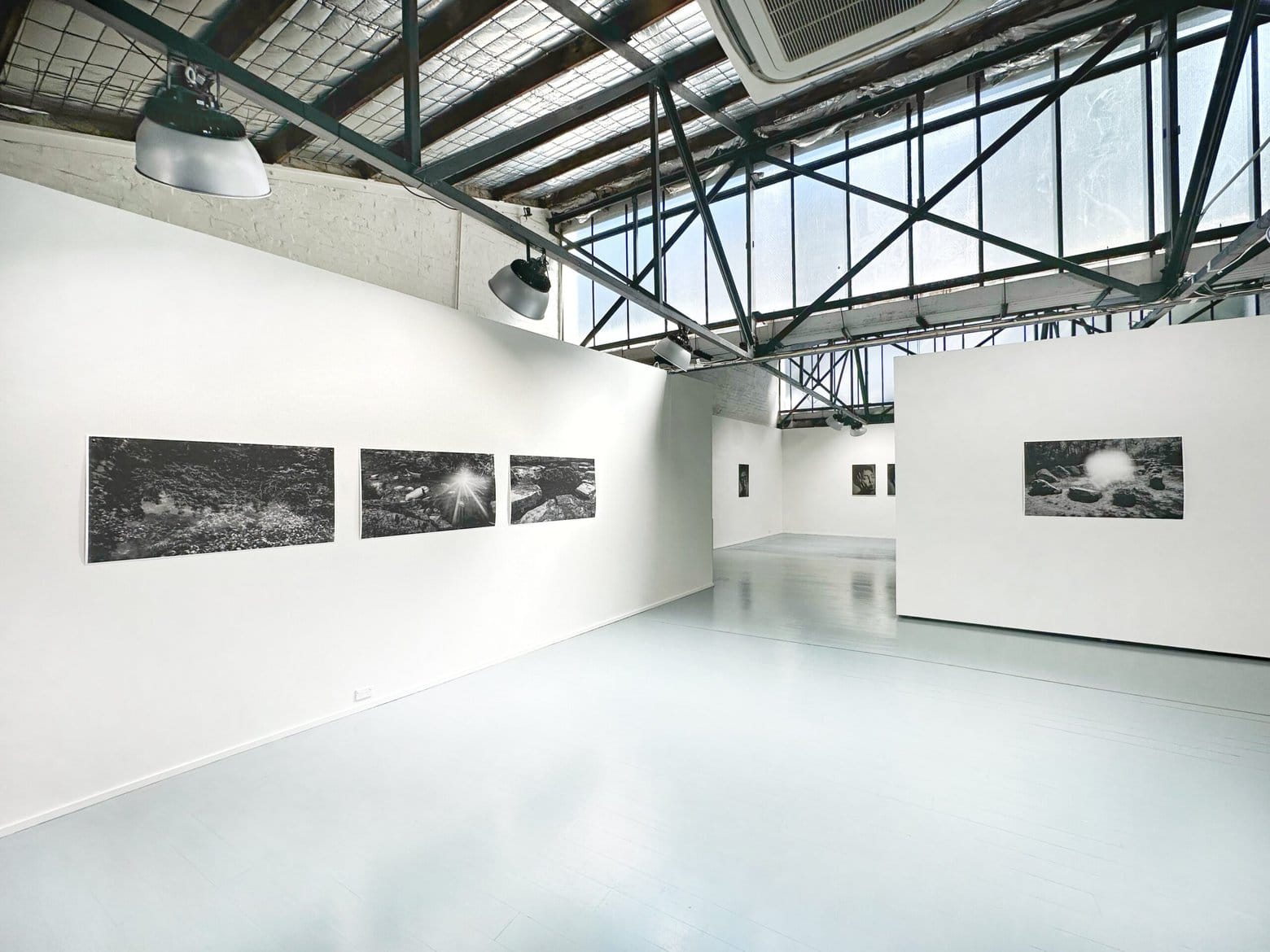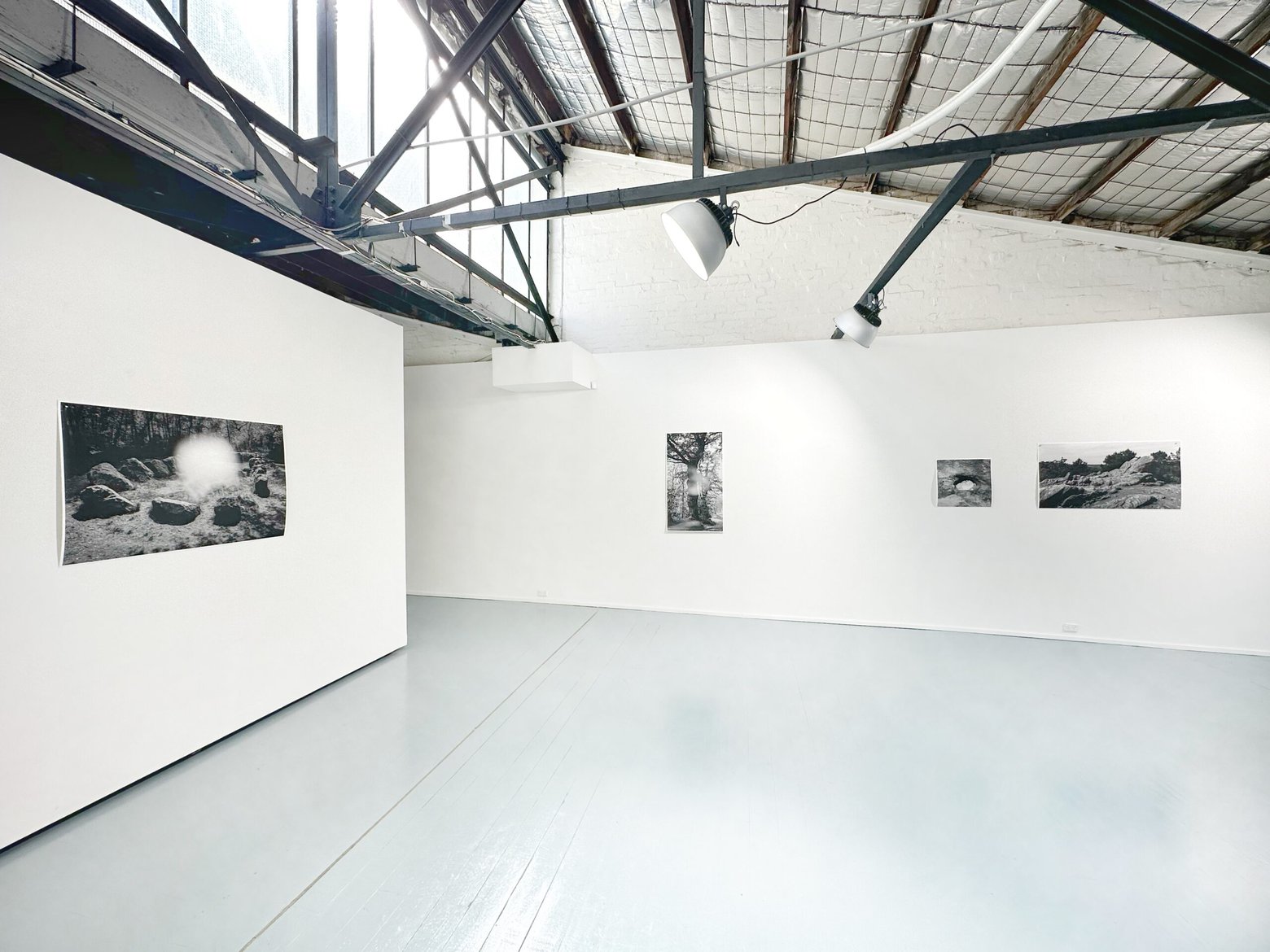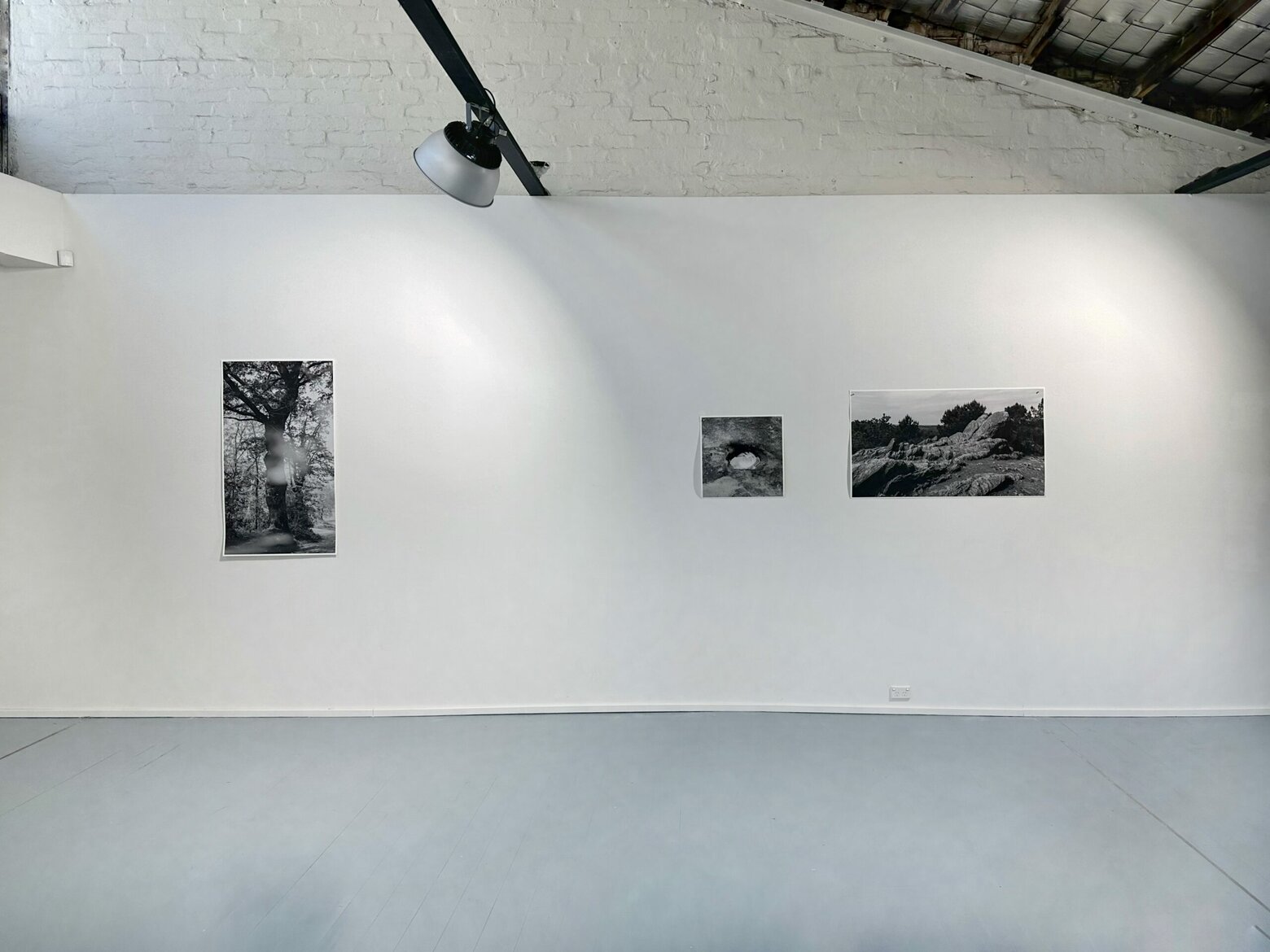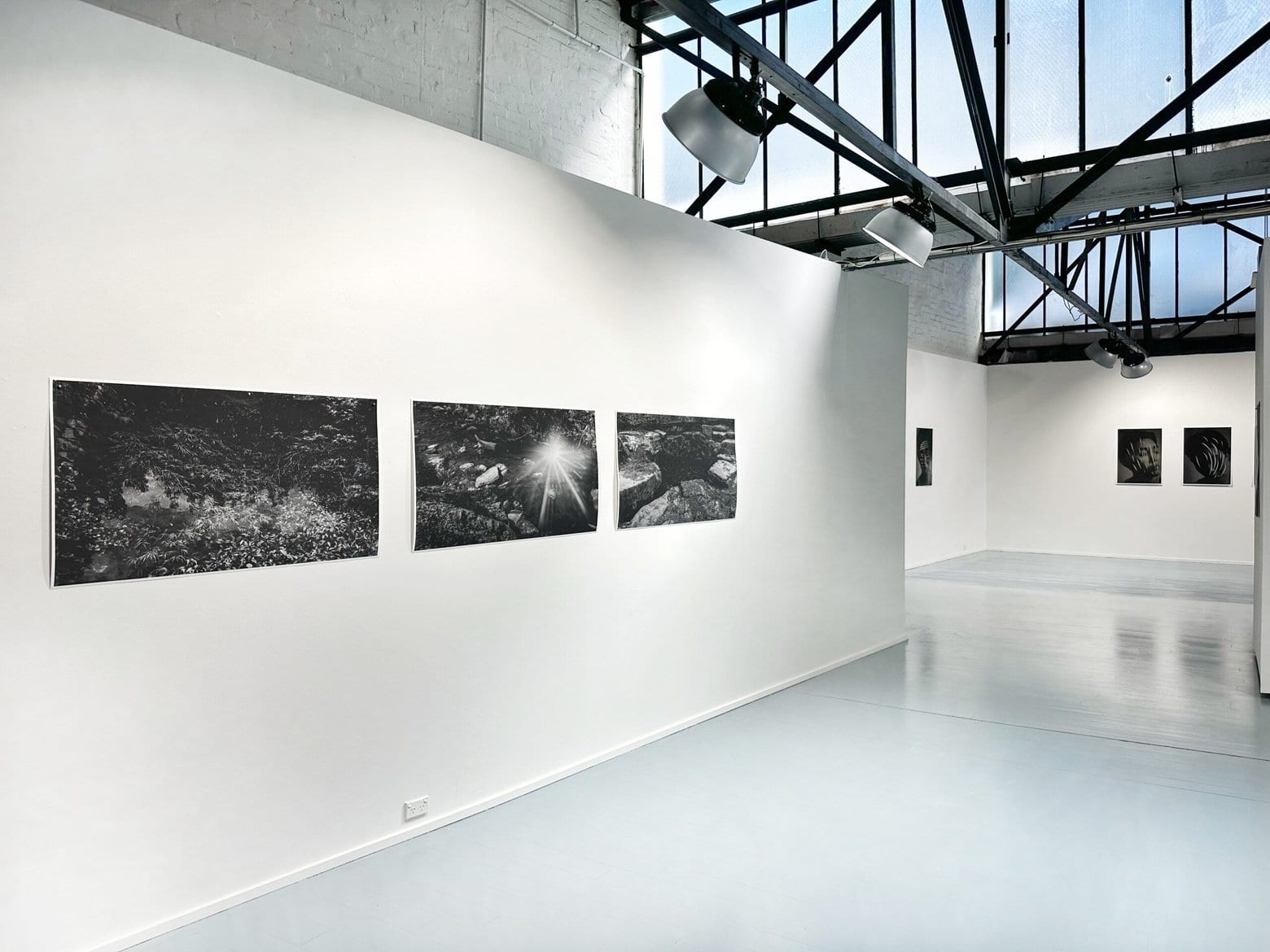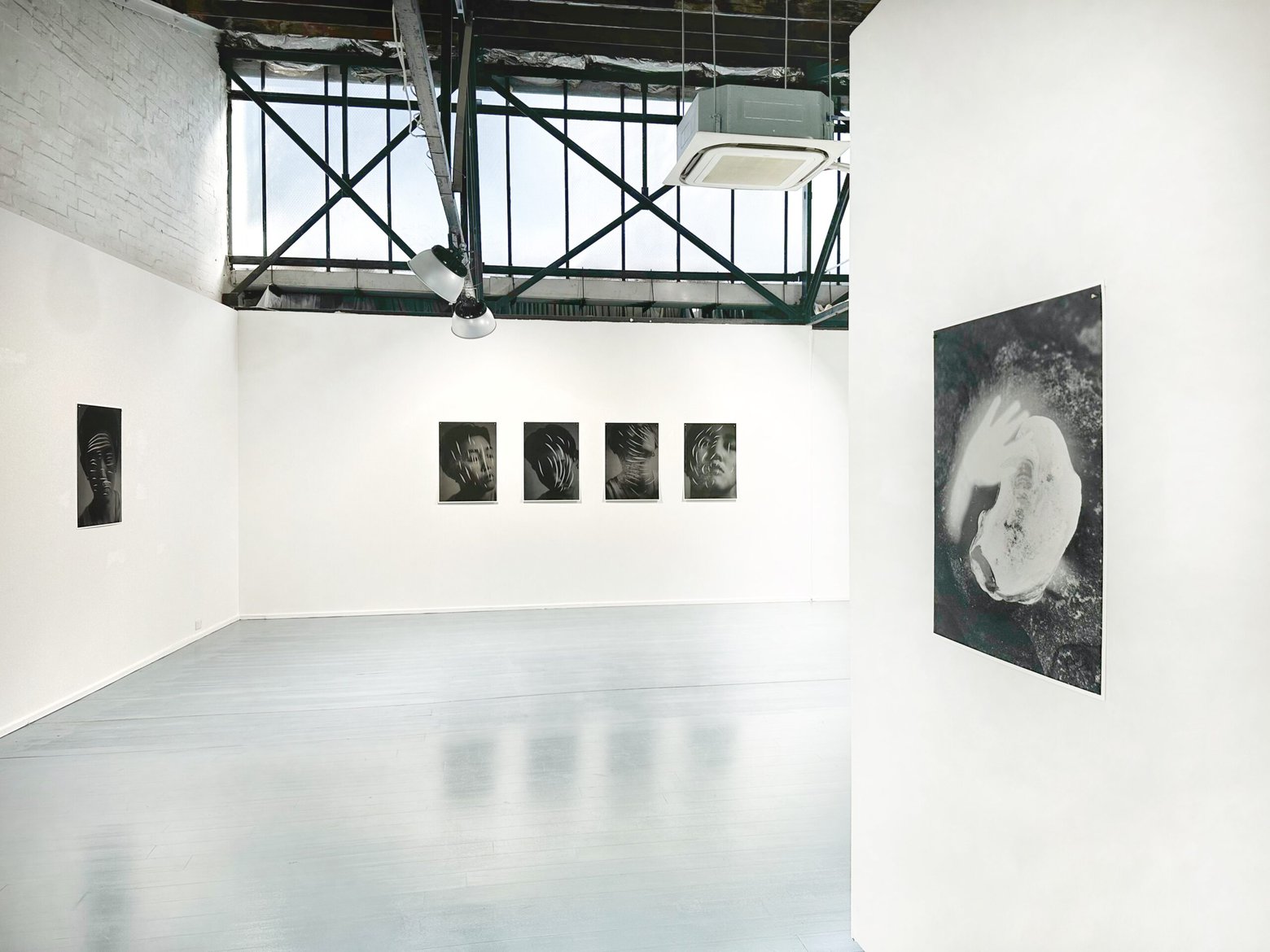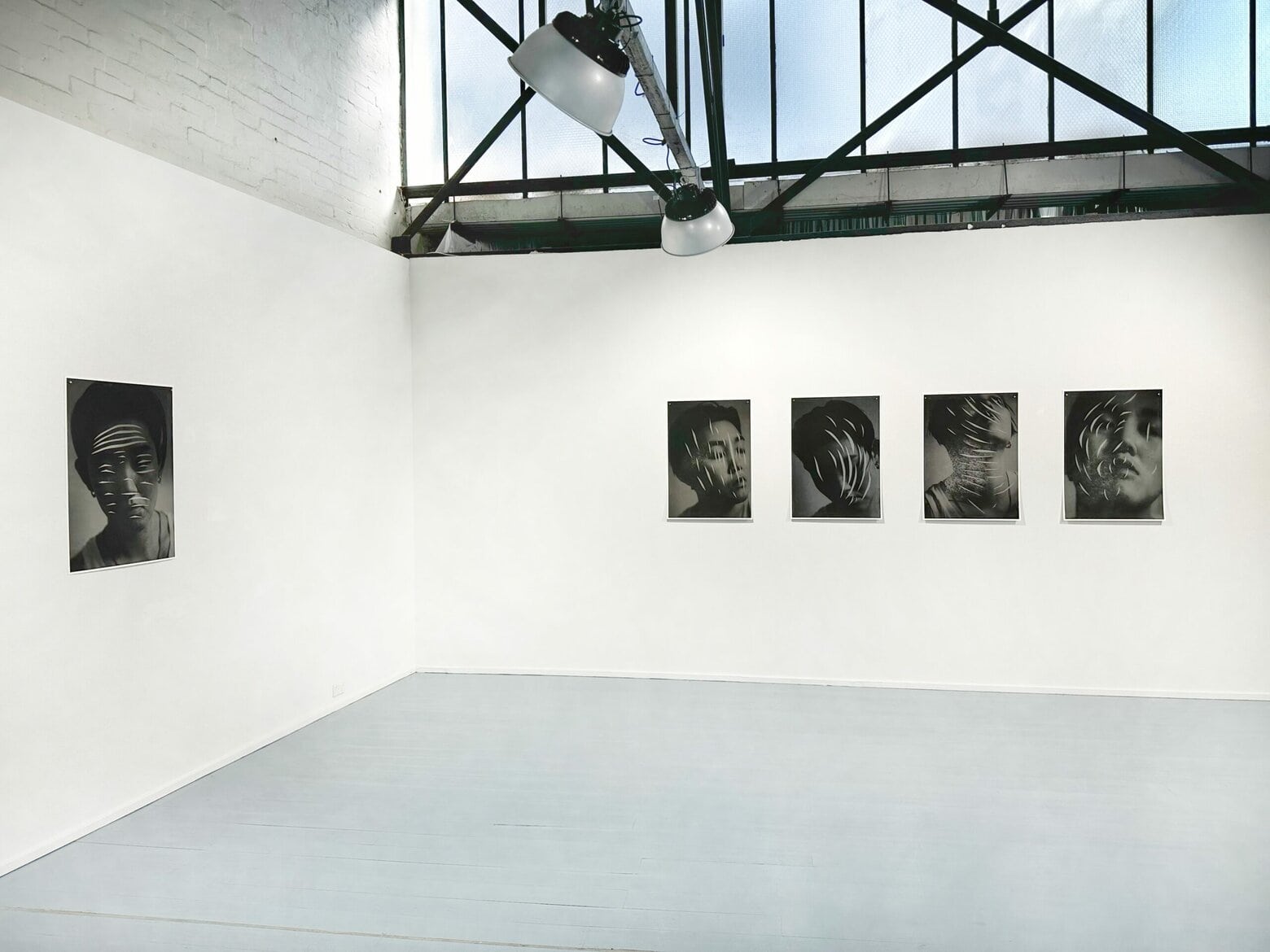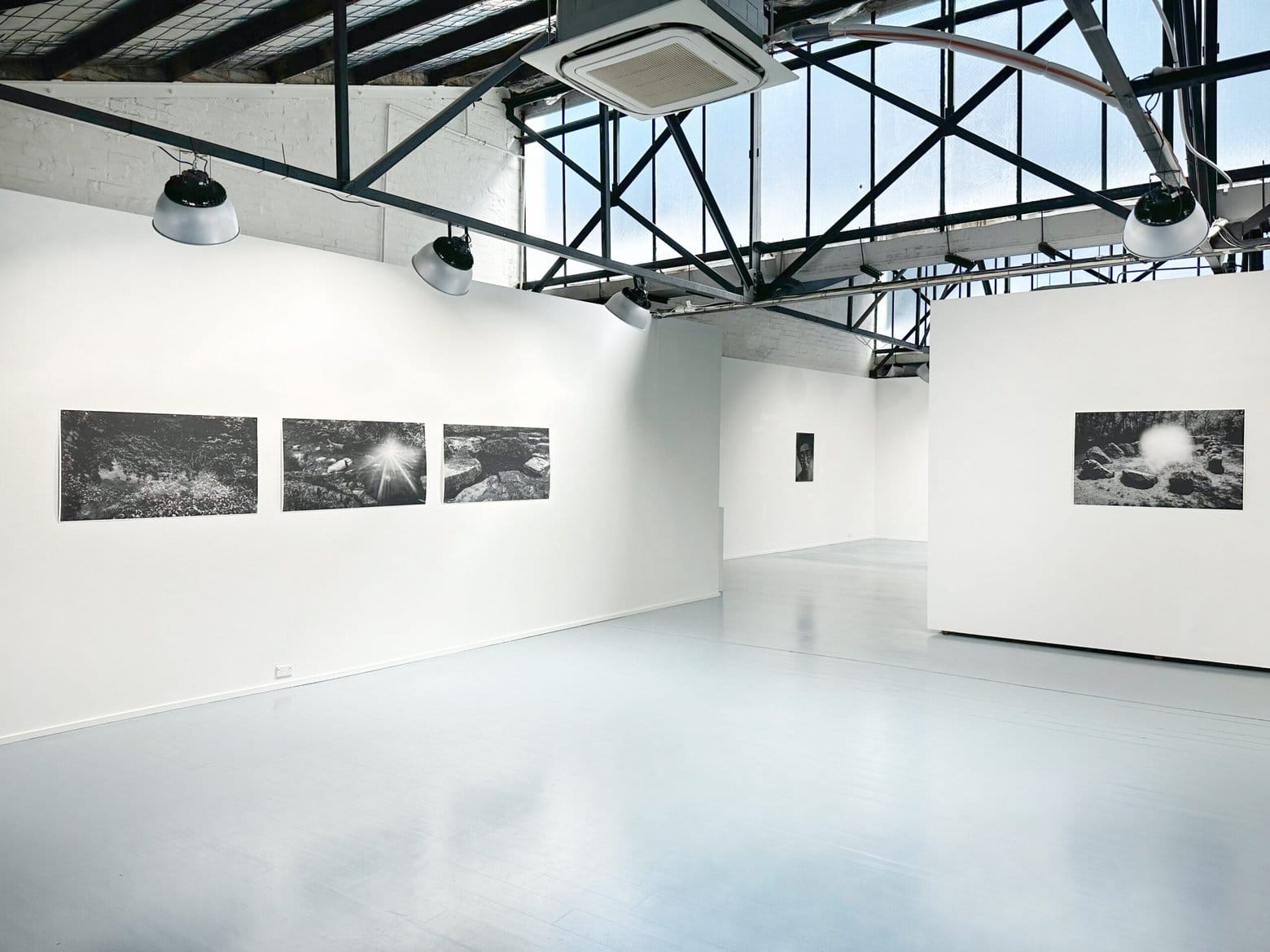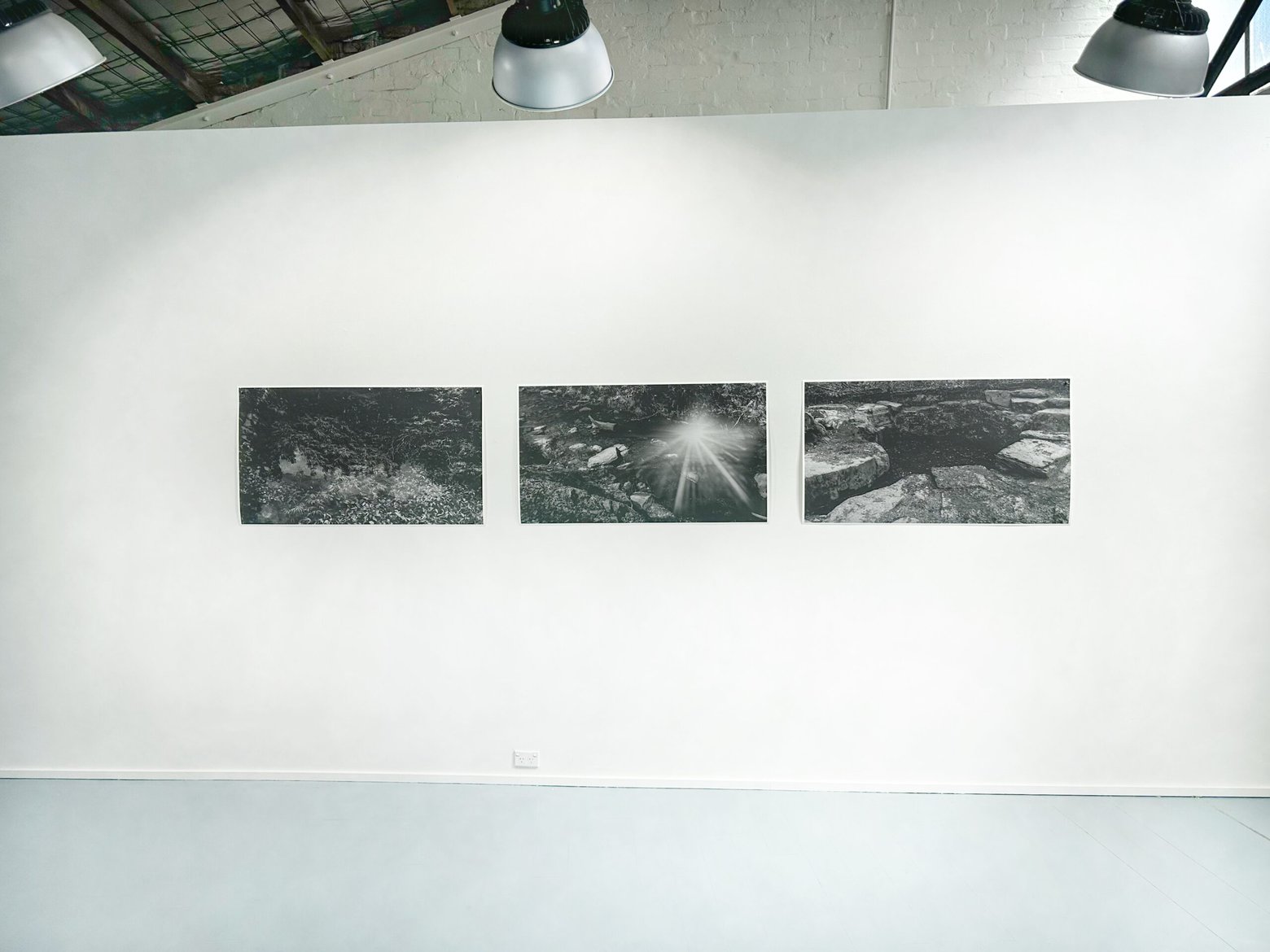Meng-Yu Yan in 2023
Heaven; just another ruin
19.04. - 03.06.2023
‘Heaven; just another ruin’ 《天堂的模样:它不不过是另⼀一⽚片废墟。》 presents a new body of work from photo-media artist Meng-Yu Yan颜梦钰 that contemplates afterlives and afterimages, as well as ideas of heaven and ruin, through a series of haunting self-portraits and mystical dreamscapes taken in the Brocéliande forest: an enchanted site connected to Arthurian legend.
Please listen to the music below while exploring the exhibition. Mix created by Brigitte.
PART I
“A long time ago I did a visualisation exercise which revealed something about one’s personality. It asked you to imagine a path. At the end of the path there was a wall. You were invited to imagine how tall or short that wall was, what it was made from, how easy it was to get to the other side. Then you were asked, what was on the other side of the wall? I imagined a low stone wall, easy to get across, thinking about the walls you find in places like Scotland, Ireland, or Brittany. They are called “thin” places, mystical places where the veil separating our world and other worlds is permeable. On the other side of the wall I imagined old houses, old furniture, and ruins. At the end of the exercise it was revealed that the path you take is life, the wall you encounter is death, and what was behind the wall is the afterlife.
This exhibition contemplates afterlives and afterimages, as well as ideas of heaven and ruin. The title was taken from the short story ‘Grave of the Fireflies’ 《萤⽕火⾍虫之墓》 by Chinese science fiction writer Cheng Jingbo 程婧波. She writes about a dying universe where the lights of the stars are all about to go out. Drifting between fantasy and science fiction, space travel is fused with knights and magicians. The story feels at once like an ancient fairy-tale and a dystopian prediction of an apocalyptic future. The images I capture here were taken in Brittany, the hometown of my partner in France. It is a mystical place brimming with Celtic myths and Breton fairy tales. We ventured to a famous forest called Brocéliande, an enchanted place connected to Arthurian legends. We encountered the Val sans retour (Vale of No Return) where Morgan le Fay used her witchcraft to imprison unfaithful knights. They were turned to stone to form the landmark Rocher des Faux-Amants (False-Lovers’ Rock). There were other stories too surrounding the Fontaine de Jouvence (Fountain of Youth), a site of sacred Druidic worship, and the megaliths of Jardin aux Moines (The Monks Garden). Within the images are ghostly absences, traces, reflections, and tricks of the light.
Photography has long been connected to the Spiritualist movement since the late 19th century. Its early purpose included documenting battlefields strewn with the bodies of soldiers during the American civil war or the Victorian habit of capturing images of loved ones who passed away. As Susan Sontag famously wrote, “All photographs are memento mori. To take a photograph is to participate in another person’s (or thing’s) mortality, vulnerability, mutability.” What makes photography one of the most spiritual mediums is perhaps its connection to light. The power of light from a long dead star can haunt us into a future we may never see. As a result, the works speak to ideas around haunting and time travel by moving between past and present, memory and prediction. Myths, legends, and fantasies are fused with looming feelings of imminent environmental collapse.”
PART II
“Beneath the rotting foliage and debris of the forest, things are constantly decaying and decomposing. Destruction is a natural process of life and regeneration. But what needs to be destroyed to make way for something new? These are ideas that emerged when I was listening to the lectures of Professor Jack Halberstam in ‘Unworlding: An Aesthetics of Collapse’. During a moment where utopias are being constructed and world-making influences both reality and fantasy, Halberstam considers what needs to be unmade and undone before new worlds can come into being. They reference artists like Gordon Matta-Clark and his ‘anarchitecture’ – a response to gentrification. With a focus on voids, gaps, and left-over spaces, he cut into buildings that were about to be demolished. His work parallels artist Doris Salcedo who created ‘Shibboleth’, a giant crack made into the floor of the Turbine Hall at the Tate Modern. Destruction is a creative process.
From social media to advertising – my world is inundated with images. What is the place of photography in a realm so over-saturated with images? Instead of making, what I wanted more was to destroy my images, to delete all the photos on my camera roll so I can be done with the constant reminders to buy more storage on iCloud. Inspired by queer photographer Jimmy DeSana, I turned to my images with a knife and began to cut into them. Photography as a medium can sometimes feel objective, cold, and removed, but cutting into the images became hands-on and personal. These self-portraits involved several stages and were created by photographing, editing, printing, cutting, then re-photographing, editing, and finally printing again. I used my own image because the idea of cutting into the image of someone else felt too violent. But perhaps that speaks to how marginalised people have had to internalise anger and turn violence inward. At the same time I was thinking about the ways queer representation and identity politics has become tokenising and flat. I wanted to go beyond ticking a box and instead rip into the surface of the image to reach something deeper.”
Subscribe to our Newsletter
Sign up to be the first for exclusive gallery news, international events, opening information and updates on our artists.
